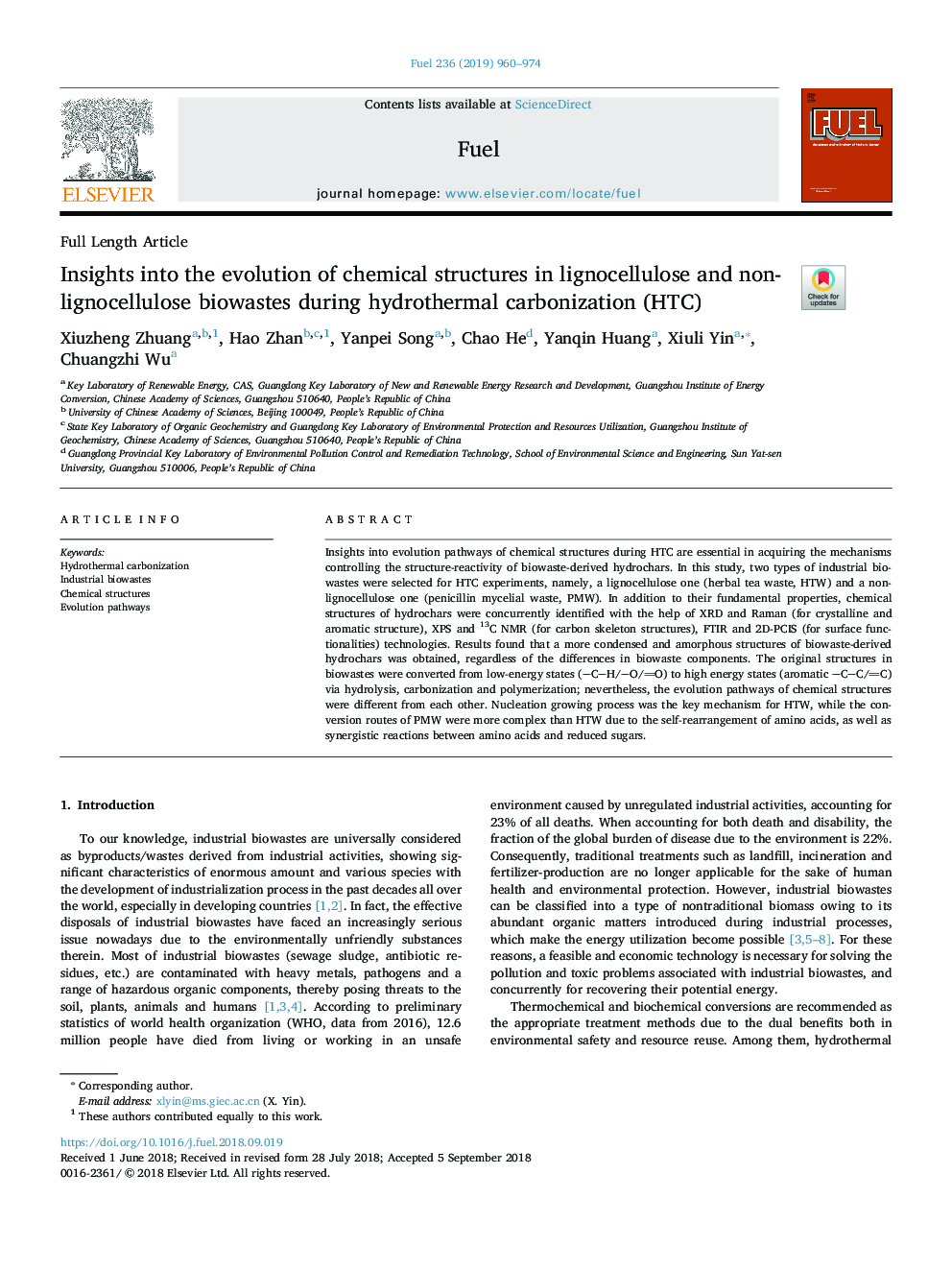| Article ID | Journal | Published Year | Pages | File Type |
|---|---|---|---|---|
| 11030246 | Fuel | 2019 | 15 Pages |
Abstract
Insights into evolution pathways of chemical structures during HTC are essential in acquiring the mechanisms controlling the structure-reactivity of biowaste-derived hydrochars. In this study, two types of industrial biowastes were selected for HTC experiments, namely, a lignocellulose one (herbal tea waste, HTW) and a non-lignocellulose one (penicillin mycelial waste, PMW). In addition to their fundamental properties, chemical structures of hydrochars were concurrently identified with the help of XRD and Raman (for crystalline and aromatic structure), XPS and 13C NMR (for carbon skeleton structures), FTIR and 2D-PCIS (for surface functionalities) technologies. Results found that a more condensed and amorphous structures of biowaste-derived hydrochars was obtained, regardless of the differences in biowaste components. The original structures in biowastes were converted from low-energy states (CH/O/O) to high energy states (aromatic CC/C) via hydrolysis, carbonization and polymerization; nevertheless, the evolution pathways of chemical structures were different from each other. Nucleation growing process was the key mechanism for HTW, while the conversion routes of PMW were more complex than HTW due to the self-rearrangement of amino acids, as well as synergistic reactions between amino acids and reduced sugars.
Related Topics
Physical Sciences and Engineering
Chemical Engineering
Chemical Engineering (General)
Authors
Xiuzheng Zhuang, Hao Zhan, Yanpei Song, Chao He, Yanqin Huang, Xiuli Yin, Chuangzhi Wu,
